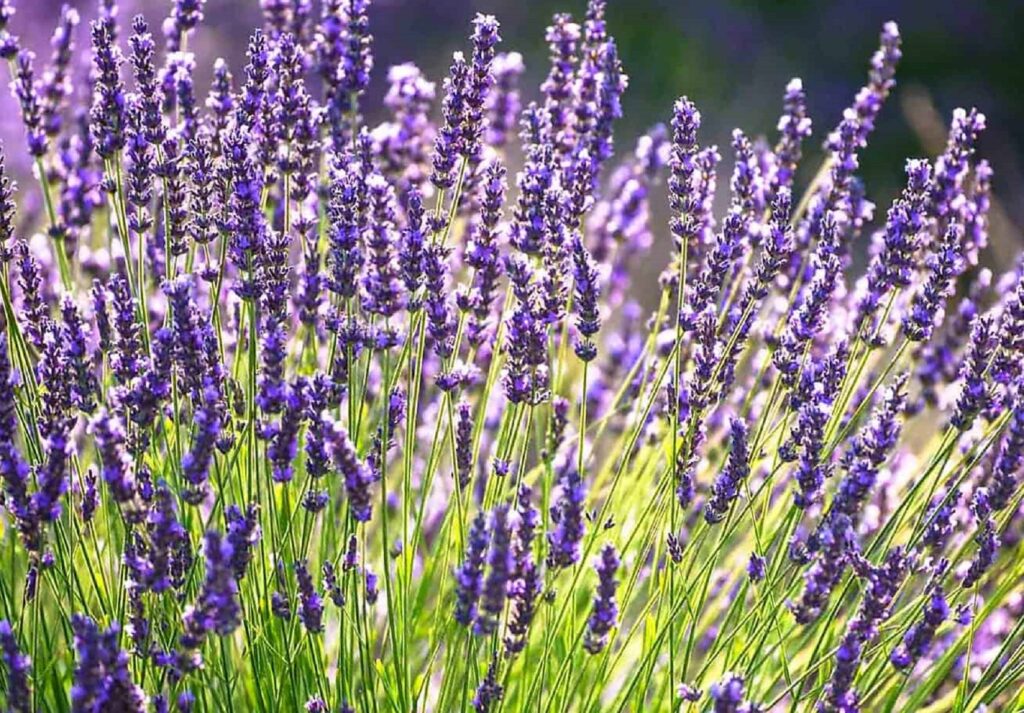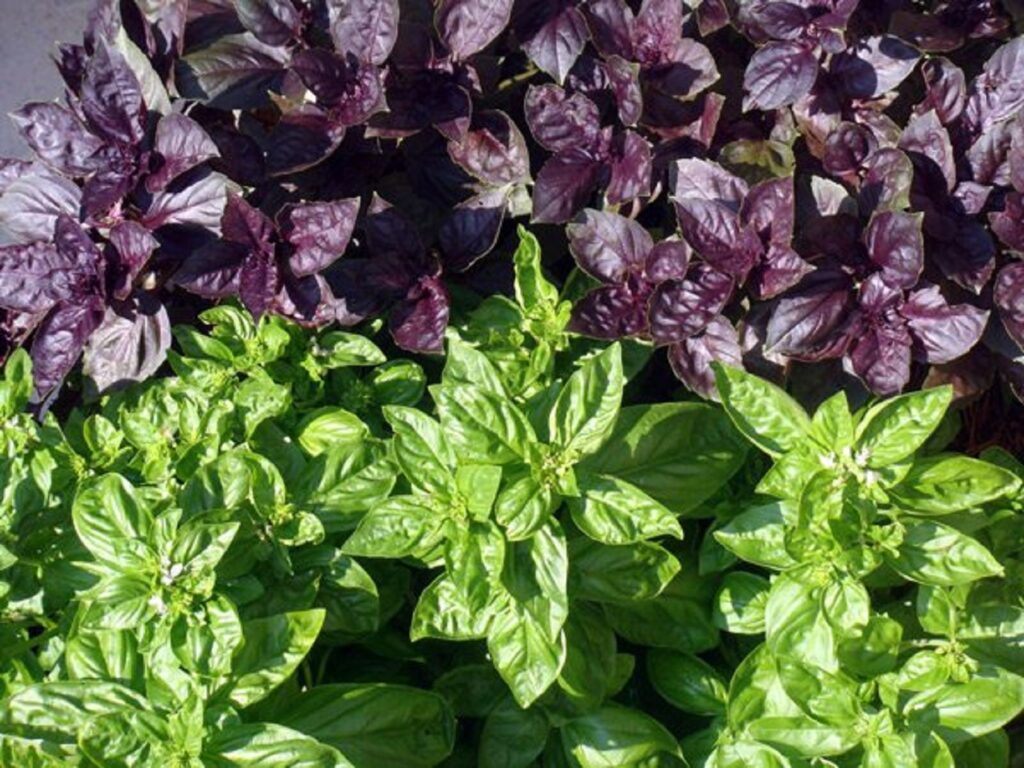Gardens with aromatic plants are increasingly being cultivated on the terraces and patios of houses, these gardens, in addition to being an ornamental element in the garden, are also a support garden, both for the kitchen and for health. Some of the most cultivated aromatic plants are mint, basil and parsley. This post shows what are the Care of Aromatic Plants.

Aromatic Plant Care
Although aromatic plants are quite rustic in nature and survive despite hot conditions, high rainfall, droughts, poor soils and other climatic factors, they are somewhat demanding plants to grow in private gardens. Aromatic plants can be planted in external gardens directly on the ground or in pots, because they are demanding with lighting, you have to observe how it adapts to the selected place, until you find a good location for its cultivation.
Aromatic Plants, in principle, do not adapt well to planting conditions in nurseries or in pots, nor to the interior of houses, even if they are provided with very good care. However, if you want to grow aromatic plants or aromatic herbs to use in culinary recipes or also because you like the aroma it gives off and also keep pests away if you plant them interspersed with other plants. Here are the easiest aromatics to grow and how to care for them.
The rosemary
The rosemary (sage rosmarinus) is a plant of the Lamiaceae family, it is a perennial shrub, with evergreen leaves and small purple or blue flowers with two unequal lips. Its leaves are leathery, pointed, intertwined, on the underside it is pubescent, monospermous fruit, indehiscent. It is native to the Mediterranean region. Gives off a strong camphoraceous odour.
It is one of the easiest aromatic herbs to care for, it can be grown directly in the garden soil and also in pots in outdoor areas. If placed inside an interior space, it must be placed near a window where a lot of light reaches it. It is undemanding in its care and responds well to all environments, however, places with warm temperatures and low humidity. It has to be watered when the soil is dry.
The fresh parsley
Parsley receives the scientific name of Petroselinum crispum It belongs to the family of the Umbelliferaceae. It is a herbaceous plant that gives off a pleasant and strong smell, it is a biennial cycle plant. It has branchy stems, trilobed leaves, segmented, smooth and bright dark green, its flowers are yellow.
It is a less resistant herb than rosemary, however, it can also be grown indoors by placing it in a well-lit place. It can be grown from seed and also by pruning the stem of the plant and seeding. You have to keep the substrate moist and watch to prevent it from drying out. In case it falls asleep or fells, it can be pruned almost to the neck of the plant so that it sprouts with more force.
Cilantro but not too much
It is known by its common names Cilantro, coriander or coriander, it belongs to the botanical family Umbeliferaceae, it has the scientific name of Coriandrum sativum. It is an annual cycle herb, with branchy and striated stems, it has a height of about 70 centimeters. Its leaves are wedge-shaped, segmented and flowers of various colors, arranged in an umbel at the end of the stems, its fruits are globose.
The coriander plant is quite similar to parsley and its care is similar. You have to observe very well to distinguish its difference, which is that the coriander leaf has more jagged edges and gives off a very particular aroma. It has to be grown in a light substrate, that is, with a greater amount of sand than clay. It has to be planted in a sunny spot and watered frequently to keep the soil moist without waterlogging.
Scented Lavender
It is a bush with a woody stem that is known as Lavender, alhucema or lavender, its scientific name is Lavandula officinalis and belongs to the Lamiaceae family. It has a height of about 15 to 60 centimeters high, with a very strong and pleasant aroma, its leaves are thick, opposite, narrow, more or less stormy; its flowers are purple and are arranged in a spike-type inflorescence located at the end of the branches. It has capsule-like fruits.
Care. Lavender is an aromatic plant that resists a lot and is highly sought after for its aroma, to use in bouquets for its beautiful flowers and pleasant aroma. It is a plant that adapts to any soil, although it is a bit difficult to grow in pots. To grow it you have to choose a sunny place, if you grow it in a pot it has to be large and with well-drained soil, it is suggested to place it in a pot with several holes so that the water drains well and place gravel at the base of it and peat-type substrate. It is suggested to water once every week or every 10 days, before checking if the soil is dry.
The fresh mint
The Mint (Mentha piperita L. var. piperita), this is a hybrid species of the aquatic mentha and M.spicata; Today there are many wild species and hybrids. Mint is an herb that gives off a strong menthol smell, it has a height of about 40 to 60 centimeters; It has opposite, oval, dark green leaves. Its flowers are purple arranged in clusters. Its fruit is an indehiscent achene.
Among its varieties can be shown the "chocolate mint", this is an aromatic plant. There is also peppermint, also a variety of the mint group. It reproduces by rhizome and requires a large amount of soil.
Care. It is a highly sought after herb for use in the kitchen, to prepare infusions and in confectionery for its menthol aroma. It requires to be cultivated in a place outside and with a constant and abundant watering frequency. It also resists being cultivated indoors, although if it does not receive enough light it will sprout and become ugly like parsley and cilantro. It is suggested to use peat-type substrate, place it outside with a lot of lighting, abundant watering, without flooding the soil, you have to be careful to maintain this plant well.
basil or yerba real
It is also known by the common names of Albahaca, basil of mount, toronjina and as yerba real, its scientific name is (Ocimun basilicum) It belongs to the Lamiaceae family. It is a herbaceous plant that measures between 20 to 30 centimeters, it is a very aromatic plant. It has petiolate, opposite, wide, dark green leaves. Its flowers are white or pink arranged in a plume at the end of the stem. The fruit is a dehiscent capsule.
Care. You can see different species and varieties that are distinguished from each other by the size of their leaves, their shape and the color of the plant, it can be purple, green or mottled. Basil is widely used to prepare sauces, salads, infusions and other dishes, due to its exquisite flavor and aroma. It is a plant resistant to places with a little shade, therefore it can be grown indoors.
It is an annual plant, with abundant flowering. At the end of flowering, it dies and has to be replaced by a new plant. Like almost all aromatic plants, they must be grown in places with good sunlight and they must be watered regularly, with plenty of water and without flooding the soil.
Thyme
Thyme ((Thymus vulgaris) belonging to the Lamiaceae family. It is a small aromatic bush, with a size between 25 to 30 centimeters in height. It has a woody stem, quadrangular in shape, oval-shaped, small and coriaceous leaves, its edge is curly, stormy on the underside, small white-pink flowers, in a corymb.
Care. Thyme is characterized by adapting to all types of soils, it is a plant that grows in places with high sun exposure and moderate irrigation. It is watered when the soil is dry. If grown in a pot, gravel must be placed at the bottom of the pot. The soil must be moist without flooding.
Oregano
Oregano (Origanum vulgare), is an aromatic herb of the Lamiaceae family, it is a herbaceous shrub that can reach about 45 centimeters in height. Its stem has a grid shape that can be colored red. Its leaves grow opposite, they have oval and wide shapes, with slightly jagged edges, they measure between 2 to 4 centimeters. Its flowers are small, white and pink, it has a branched and terminal inflorescence.
Watch out. It adapts well to different types of soils, it has to be watered frequently but with moderate risks, to avoid flooding the soil. For this reason, you have to be aware that before watering the soil must be dry. It has to be planted in full sun, it is a plant that does not grow well in a pot. It is used as an aromatic plant to make sauces for pasta, pizza and other dishes.
Care for growing indoors
As previously shown, most aromatic plants are plants that grow in full sun. But following some precautions, they can be grown indoors, always monitoring how it grows and that it receives good sunlight. Here are some precautions to consider:
- When it is grown indoors, a place should be found where good natural lighting reaches it, near windows or internal patios. The aromatic plants of parsley, coriander and basil grow well in semi-shade.
- The risks have to be moderate so as not to flood the soil.
- The pots must have several holes so that the water drains well, and it is suggested to place a layer of gravel.
- When I put a pot cover plate, I removed the excess water once I finished watering.
- Pruning is done when the plants fall asleep or spike, in order to recover the plant, perform a severe pruning, up to about 3 centimeters from the base of the stem, so that they sprout again with greater vigor.
I invite you to continue knowing the wonderful nature and how to take care of it, reading the following posts:


